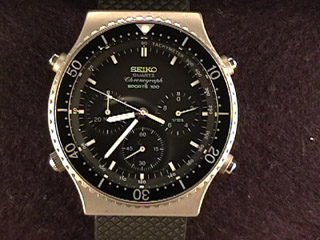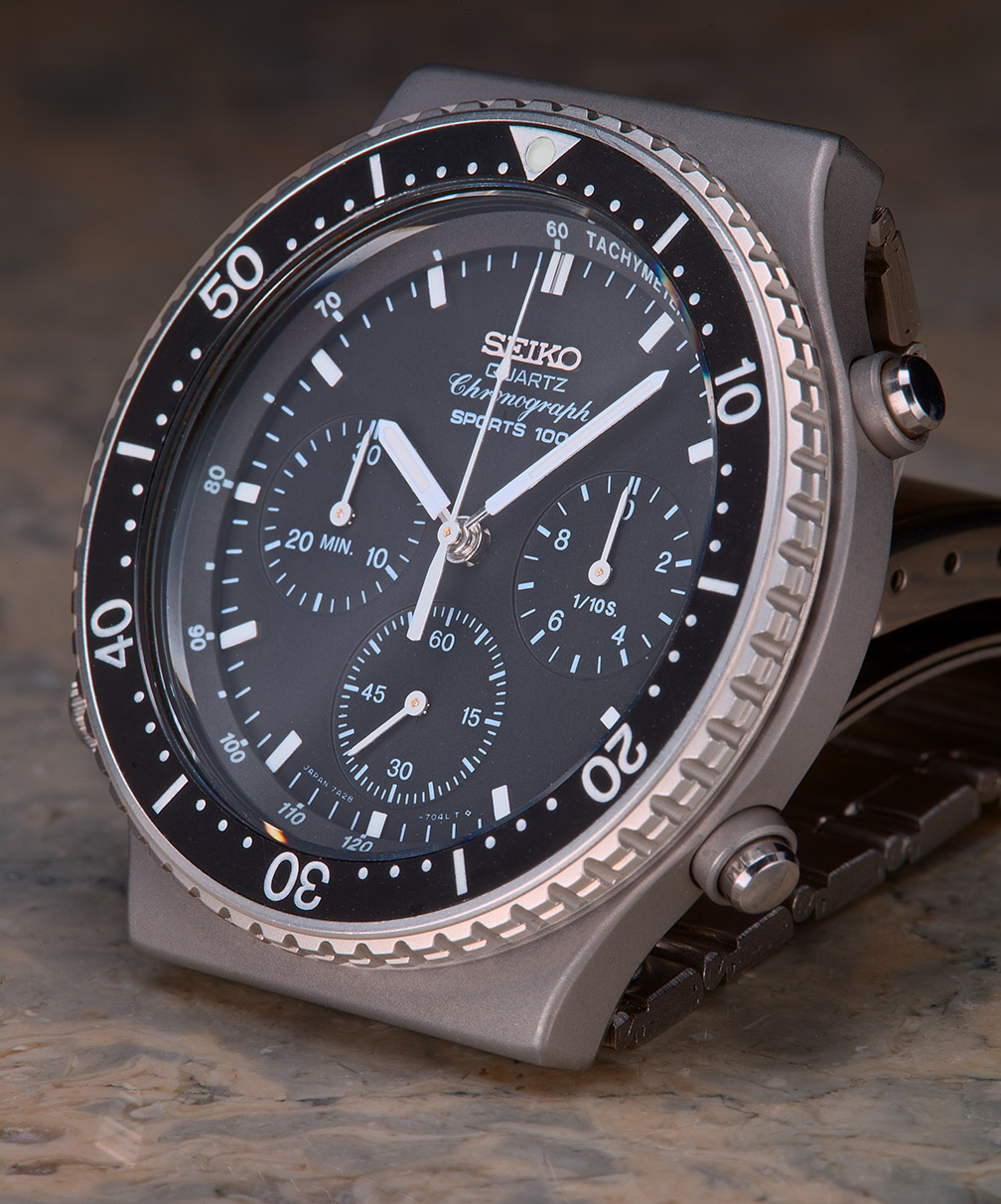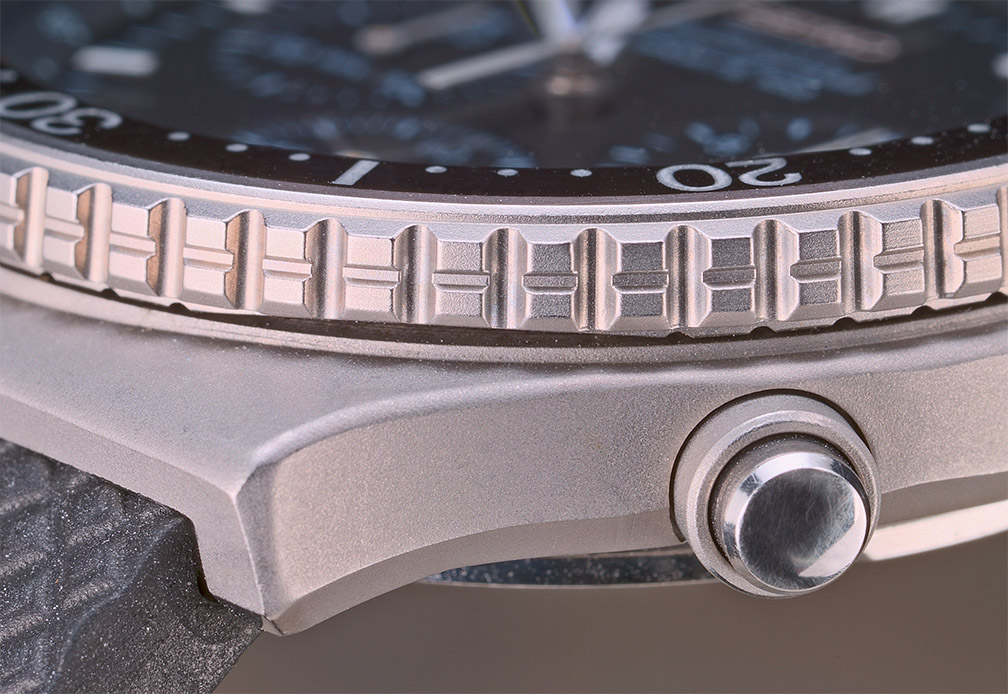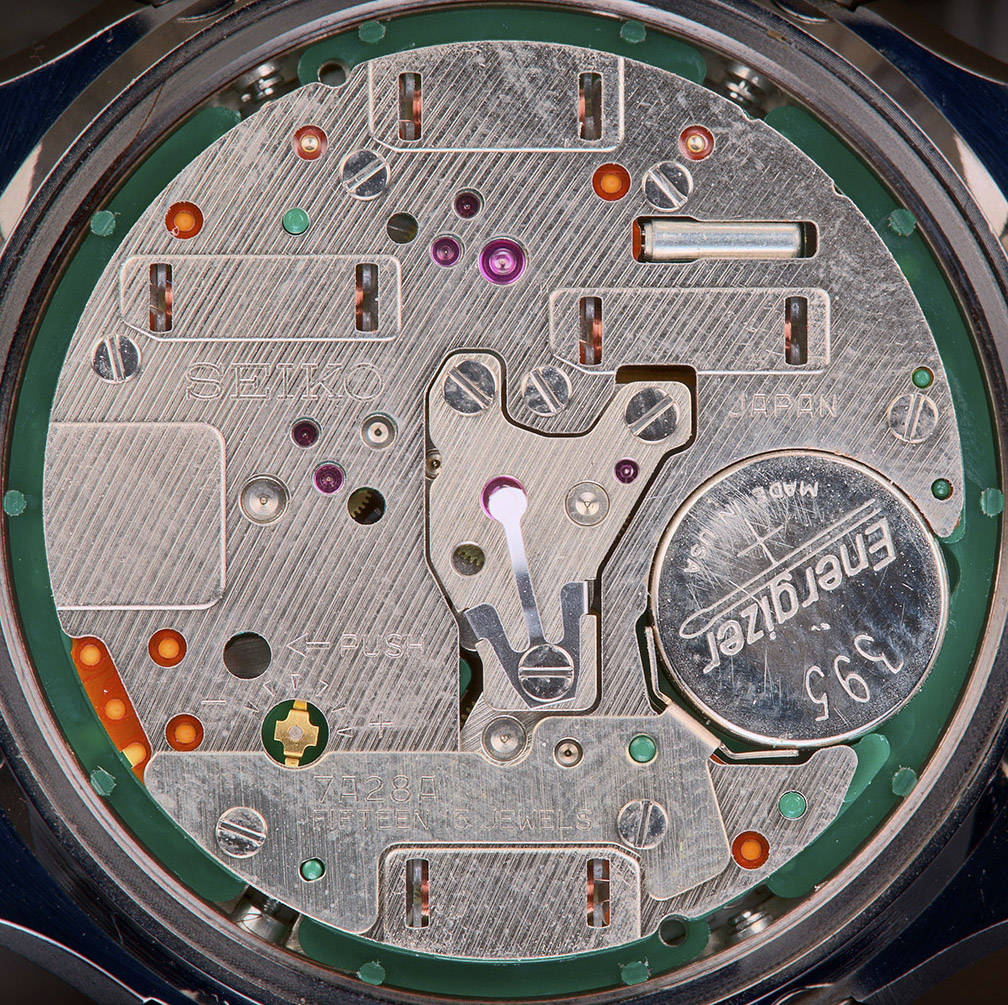
Perhaps understandably, the world of high-end quartz-controlled chronographs is a real backwater of horology. There seem to be two recognized examples, the mecaquartz Jaeger-LeCoultre (also used by IWC) caliber 631 (and variations, including moonphase and alarm), and Frederic Piguet caliber 1270 (and 1271 rattrapante), supplied to a wide variety of makers, including Hublot, Breitling, Bulgari, Omega, Harry Winston and Chopard. Both date from the late 1980s, and while the JLC is (as best I can determine) now discontinued, the Piguet continues to power some contemporary watches. The motivation to create these hybrids seems to be providing quartz-controlled timekeeping accuracy in a chronograph with traditional mechanical look and feel. Along the way, both manufactures took the opportunity to significantly compact their movements, the JLC being 23.3 x 3.7 mm, and the Piguet 27.6 x 4.75 mm; these are very thin (and for the JLC, narrow) chronographs.
Stephen Sugiyama has chronicled them beautifully, so I will just cite a few items from his article. Both movements use levers and cams to provide instantaneous, mechanical reset, while the start/stop button simply activates the chronograph motor, rather than engaging a traditional clutch. They are fully jeweled (JLC-25, Piguet-22), have smooth chrono-seconds hands (JLC-4 ticks/second, Piguet-16!) and are certainly nice looking movements, but current perspective suggests that their real accomplishments are idiosyncratic. Here are a few of Stephen's pictures:

The above, by way of introduction, is intended to provide at least some slim historical context to the present Seiko chronograph, which notably predates both Swiss efforts. Introduced in 1983, Seiko's 7A28 (and related) movements were intended as their best efforts in designing quartz-controlled chronographs. As with the JLC and Piguet movements, this now seems rather quaint, if not misguided, but at the time these held real horological significance. While the Swiss firms were naturally trying to preserve their vital traditions from the seemingly-past mechanical age, Seiko dove right in and produced the world's first all-analog-display quartz chronograph. Even though these watches were relatively modestly priced (about US$250), the 7A28s inside were clearly intended to be permanent movements. Most unusually, the mechanism is fully jeweled (15), uses no plastic parts, and allows for simple regulation by the user. A separate motor is provided for each indicating function, and the button at 10 o'clock temporarily stops the chronograph hands' motion as actual timing continues, providing an odd sort of "split-second" function. Best of all, while the main chrono-seconds hand moves at the typical quartz once/second, the hand within the subdial at 3 o'clock races along at a most entertaining 20 steps per second, (although it is labeled "1/10s").
 <--- click for a brief movie!
<--- click for a brief movie!
My initial interest in this Seiko was as a military watch, in this case chronographs produced for the British Royal Air Force in the 1980s and 90s. During this time two very distinct models were supplied by Seiko; while the later was a perfectly ordinary watch with a disposable unjeweled movement, the original 1983 design was powered by the very sophisticated 7A28. Although only some 11,000 were issued during the ensuing decade, it was an iconic design, with a 38mm case and an especially elegant and functional dial (click for more!):


 <
<



Please check out the rest of my watch Articles and pics:
I hope you enjoyed this!
SteveG
August 14, 2006
All content Copyright asserted 2003, 2004, 2005, 2006